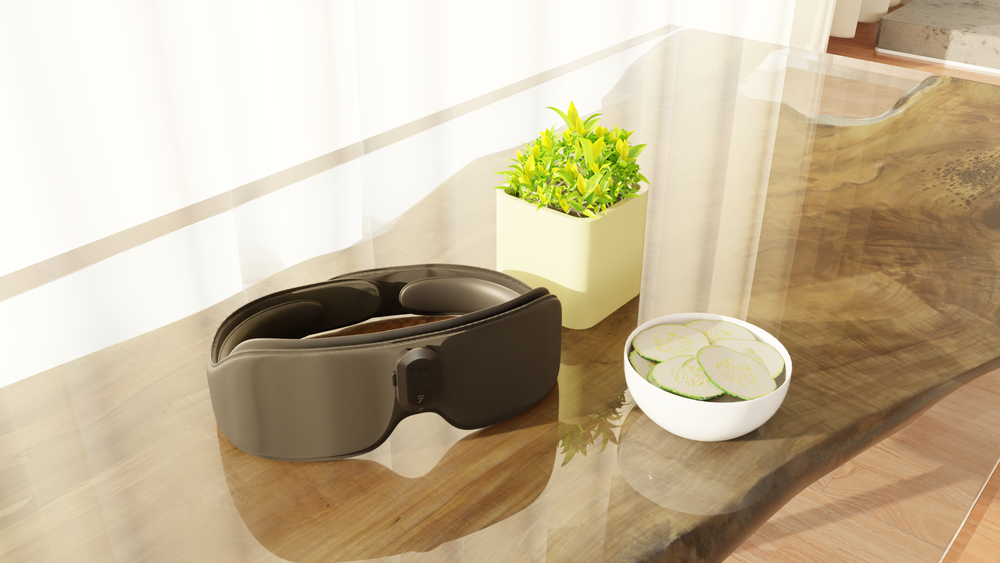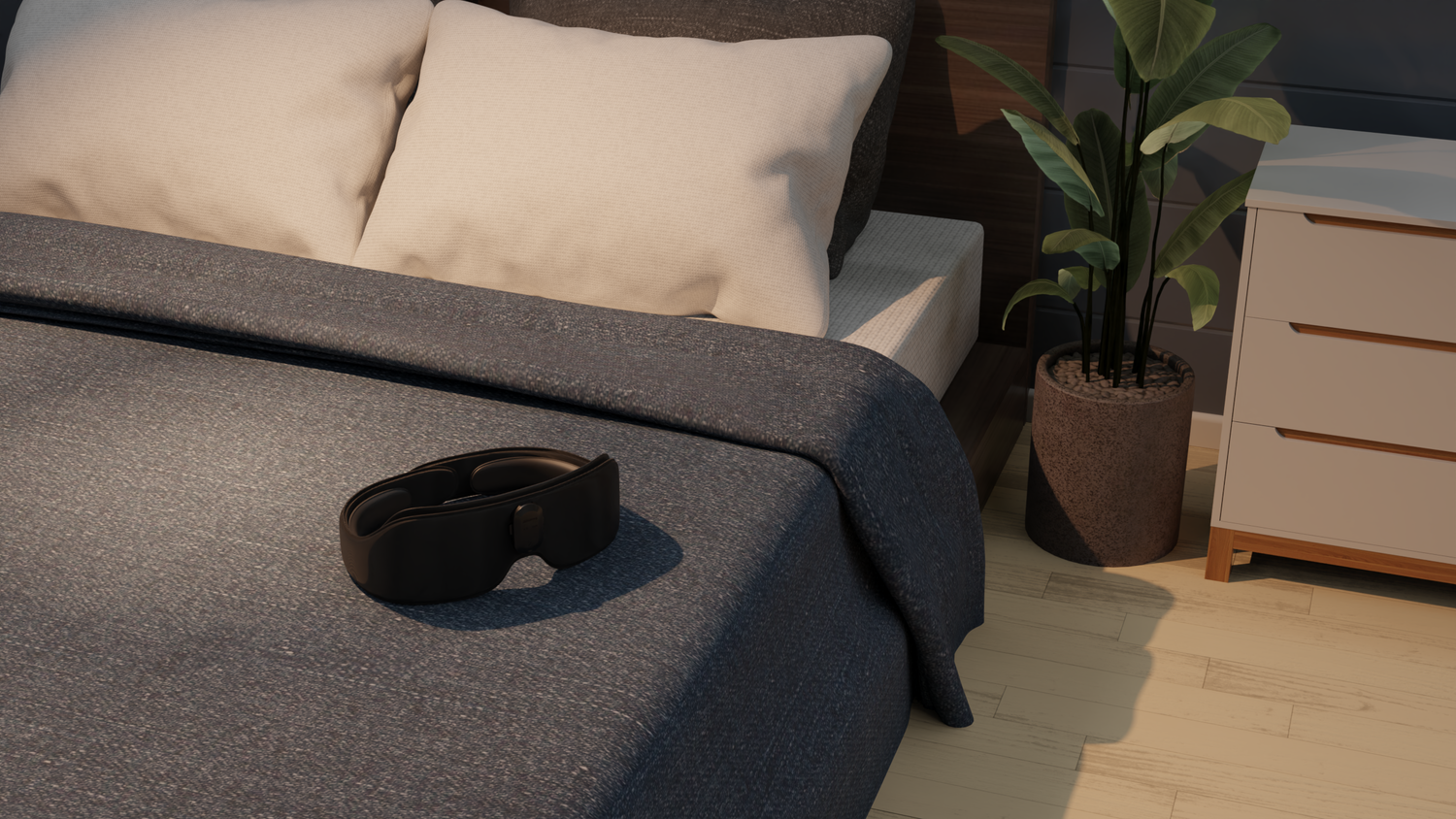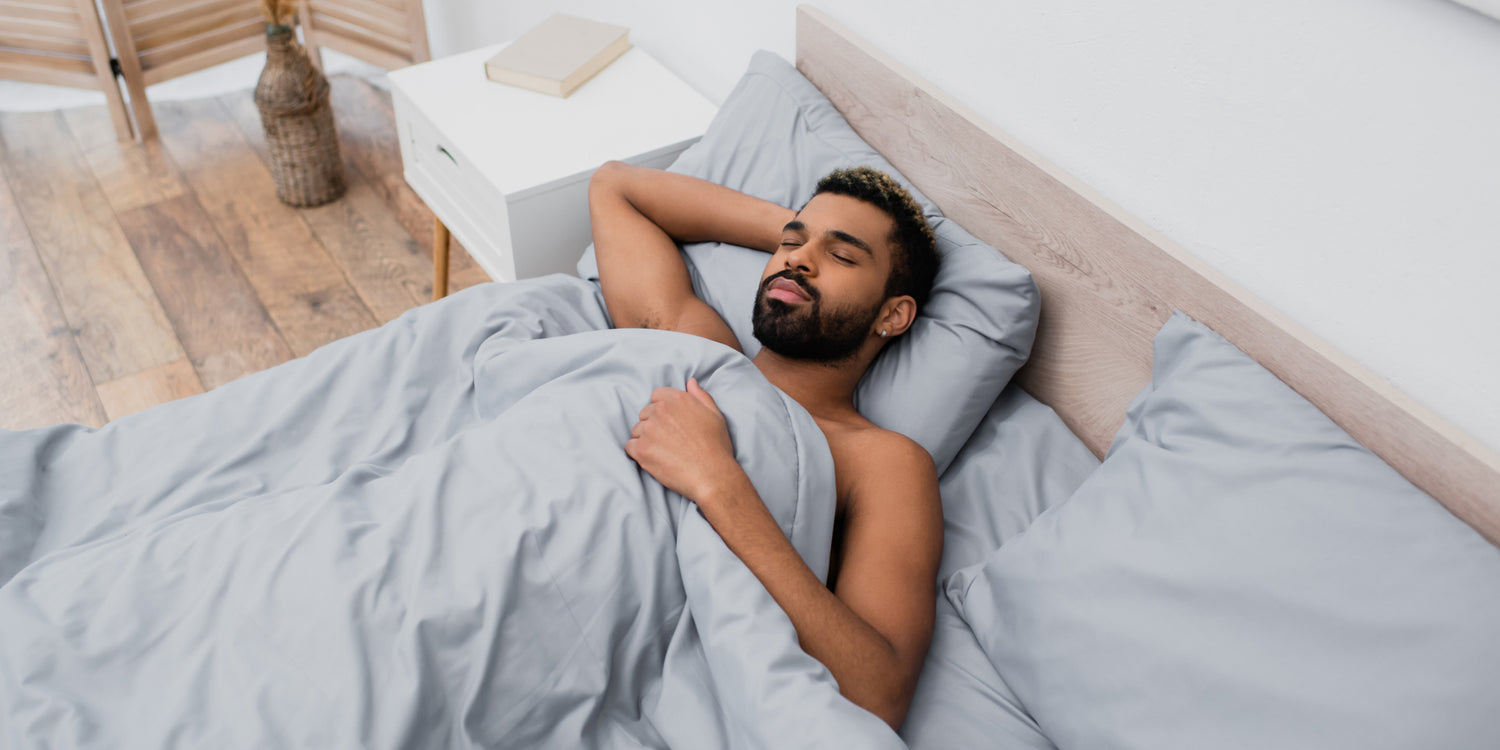Say Goodbye to Dark Circles: How Eye Masks Can Transform Your Look

Stay tuned to our latest news
Are you tired of waking up and seeing those dreaded dark circles under your eyes? Do you constantly reach for concealer to hide the signs of fatigue? If so, it's time to say goodbye to those pesky dark circles and welcome a fresh, rejuvenated appearance with the transformative power of eye masks.
These simple yet effective skincare tools have gained immense popularity in recent years for their ability to revitalize and rejuvenate the delicate skin around the eyes. In this article, we will explore how eye masks can work wonders for your under-eye area, helping you achieve a more youthful and radiant look. So, get ready to bid farewell to dark circles and say hello to a brighter, more refreshed you!
Understanding the Causes of Dark Circles and Puffiness
Many people struggle with dark circles and puffiness under their eyes. Their presence can have a significant impact on their appearance and self-esteem. Therefore, understanding the causes of these common issues can help individuals take steps to address and minimize their effects. From lack of sleep and stress to genetics and aging, various factors contribute to dark circles and puffiness, but you can make informed choices about how to effectively treat and manage these concerns to look and feel their best.
-
Lack of Sleep and Fatigue
Lack of sleep and chronic fatigue can have significant negative effects on both our physical and mental well-being. Physically, it can weaken the immune system, making us more susceptible to illnesses and infections. It can also result in weight gain or difficulty in maintaining a healthy weight due to disrupted metabolism and hormonal imbalances. Additionally, sleep deprivation and fatigue can impair cognitive function, affecting concentration, decision-making, and information retention. They can also contribute to mood swings, irritability, and heightened stress levels, impacting our overall emotional stability. Furthermore, it can lead to an increased risk of accidents and injuries due to decreased alertness and slower reaction times.
Fortunately, inadequate sleep and fatigue can be addressed by establishing a consistent sleep schedule. Going to bed and waking up at the same time every day helps regulate and improve the quality of sleep. Moreover, creating a relaxing bedtime routine, such as reading a book or taking a warm bath, signals to the body that it's time to wind down. Avoiding caffeine and electronic devices before bed can also help promote better sleep, as these can interfere with the body's natural sleep-wake cycle.
Remember that practicing good sleep hygiene is important for addressing lack of sleep and fatigue. Keeping the bedroom dark, quiet, and cool can create an optimal environment for sleeping. Avoiding stimulating activities, such as watching TV or using the phone, in bed can also help improve sleep quality and prevent dark circles and puffiness.
-
Genetics
In addition to lifestyle causes, dark circles and puffiness under the eyes can be influenced by genetics. The traits of thinner skin and less fat padding under the eyes can be inherited from parents, making an individual more susceptible to developing undereye issues. These genetic factors contribute to the appearance of dark circles and puffiness by allowing blood vessels and underlying structures to be more visible through the skin.
Genetics also impact the production of collagen and elastin, which are essential proteins for maintaining the skin's firmness and elasticity. Collagen provides structural support to the skin, while elastin allows it to retain its shape and flexibility. The genes involved in collagen and elastin production can vary among individuals, which can affect the overall health and appearance of the skin.
Inheriting genes that lead to decreased collagen and elastin production can result in thinner skin and a reduced elasticity, making dark circles and puffiness more prominent. On the other hand, individuals with genes that promote optimal collagen and elastin production may have thicker and more resilient skin, which can help reduce the appearance of undereye issues.
At the end of the day, it's important to note that while genetics can cause someone to have dark circles and puffiness, environmental factors, such as sun exposure, smoking, and inadequate sleep, can exacerbate these issues. Therefore, a comprehensive approach that combines lifestyle modifications, skincare, and possibly medical interventions can be effective in managing and reducing the appearance of undereye concerns influenced by genetics.
-
Aging
Aging can contribute to the development of dark circles and puffiness under the eyes in several ways. Firstly, the skin naturally becomes thinner and loses elasticity as we age. This thinning makes blood vessels more visible, resulting in the appearance of dark circles. Additionally, diminished elasticity contributes to puffiness as the skin becomes less resilient.
Secondly, there is a natural loss of fat and volume in the face with aging, including the area around the eyes. This loss can highlight underlying blood vessels and structures, leading to a hollowed appearance and the formation of shadows that contribute to dark circles.
Furthermore, aging can affect the efficiency of the lymphatic system, which helps drain excess fluid from tissues. As the lymphatic system becomes less efficient, fluid accumulation in the under-eye area can occur, resulting in puffiness and swelling.
The degradation of collagen and elastin is another aspect of aging that contributes to dark circles and puffiness. These proteins are crucial for maintaining the skin's structure and elasticity. As collagen and elastin degrade over time, the skin loses its firmness and resilience, making it more susceptible to sagging and contributing to the appearance of puffiness.
Lastly, aging can also lead to skin damage and pigmentation changes. Sun exposure over the years can cause the breakdown of collagen fibers and the development of hyperpigmentation. These changes can make the under-eye area appear darker and more prominent.
-
Dehydration
Dehydration occurs when the body loses more water than it takes in, leading to a range of health issues including dry and dull skin. To address dehydration, it is crucial to drink an adequate amount of water daily, ideally 8-10 glasses. This helps replenish lost fluids and keeps the body properly hydrated. Additionally, consuming foods with high water content, such as fruits and vegetables, can also contribute to skin hydration. A diet rich in water-containing foods can help in preventing dehydration and maintaining a healthy, glowing complexion. Moreover, using a smart scale can help you determine if you’re dehydrated.
Being mindful of dehydration is important, as it can lead to the skin appearing dull and sunken, exacerbating the appearance of dark circles. By staying well-hydrated and incorporating high-water-content foods into the diet, it is possible to prevent these issues and maintain healthy, radiant skin. It is crucial to pay attention to these factors and take necessary steps to prevent dehydration, ensuring not only overall health but also the appearance of the skin.
-
Sun Exposure
Exposure to the sun can significantly impact the delicate undereye area. Harmful UV rays can lead to the production of extra melanin, resulting in post-inflammatory hyperpigmentation and the appearance of dark eye circles. This is why it is crucial to protect the undereye area from sun damage.
Using sunscreen with a high SPF is essential for shielding the skin from UV rays. Applying sunscreen to the undereye area can help prevent the production of excess melanin, reducing the risk of dark eye circles. Additionally, wearing sunglasses or a wide-brimmed hat can provide added protection by reducing the amount of direct sunlight reaching the eyes and surrounding skin.
Taking these protective measures helps safeguard the undereye area from the harmful effects of sun exposure, minimizing the risk of developing dark eye circles caused by increased melanin production and post-inflammatory hyperpigmentation. Prioritizing sun protection for the undereye area is crucial for maintaining healthy-looking skin and preventing the appearance of dark circles.
Do Eye Masks Help with Puffiness and Dark Circles?

Eye masks can offer temporary relief for puffiness and dark circles under the eyes, though their effectiveness may vary depending on the specific causes of these concerns. Chilled or infused eye masks, such as those containing cucumber or aloe vera, can help reduce puffiness by constricting blood vessels and soothing the skin. The cold temperature can alleviate inflammation and swelling, providing a refreshing sensation. Some masks also contain hydrating and soothing ingredients that can temporarily improve the appearance of dark circles and alleviate dryness.
However, it's important to note that eye masks typically provide short-term benefits and should not be considered a permanent solution for addressing the underlying causes of puffiness and dark circles. If these concerns persist or are severe, it is advisable to consult with a dermatologist or healthcare professional to determine the underlying cause and develop a comprehensive treatment plan.
In addition to using eye masks, there are other measures you can take to help reduce puffiness and dark circles. Getting enough sleep, elevating your head while sleeping, and using cold compresses can all provide some relief. Protecting your skin from sun exposure by using sunscreen and wearing sunglasses is also important, as sun damage can worsen the appearance of dark circles. Maintaining a healthy lifestyle, including staying hydrated, avoiding smoking, and moderating alcohol consumption, can also contribute to improving the appearance of the under-eye area.
Additional Tips for Reducing Dark Circles

As previously mentioned, relying solely on eye masks is not enough to get rid of dark circles. Therefore, adding in more lifestyle changes, such as incorporating regular sleep, reducing eye strain, and managing stress, can greatly help reduce dark circles under the eyes. Moreover, using a specifically formulated eye cream that targets dark circles and puffiness can also aid in reducing their appearance.
Managing stress is important, as it can lead to poor sleep quality and result in dark circles. Finding healthy ways to manage stress, such as exercise, meditation, or therapy, can help improve the overall appearance of the under-eye area.
Introducing techniques such as applying cold compresses to the eyes, staying hydrated, and avoiding rubbing and scratching the delicate under-eye area can also contribute to reducing dark circles. Cold compresses can help constrict blood vessels and reduce swelling, while staying hydrated can improve skin elasticity and reduce the appearance of dark circles.
Takeaway
Eye masks can temporarily reduce puffiness and dark circles by constricting blood vessels, soothing the skin, and providing hydration. However, they are not a permanent solution and should be used alongside other measures. To address them, establish a consistent sleep schedule, practice good sleep hygiene, protect the skin from the sun, stay hydrated, and manage stress. Eye masks can provide temporary relief but consult a professional if the problem persists.
Therefore, eye masks can be a helpful tool in managing temporary puffiness and dark circles under the eyes. However, addressing the underlying causes and incorporating lifestyle changes are essential for long-term improvement. By taking a holistic approach to skincare and overall well-being, individuals can achieve a more youthful and rejuvenated appearance in the under-eye area.
Renpho Health Tips
-

5 DIY Eye Mask Recipes You Can Make at Home
January 10, 2024
Read more >
-

Conquering Migraines: Unlocking the Power of Eye Massagers for Lasting Relief
January 9, 2024
Read more >
-

Do Eye Masks Help? 4 Benefits You Need to Know
January 9, 2024
Read more >
-

The Art of Napping: The Transformative Effects of Napping and Power Naps
December 21, 2023
Read more >
-

How to Relax Like a Pro: 5 Easy Ways to Rest Better
November 17, 2023
Read more >




